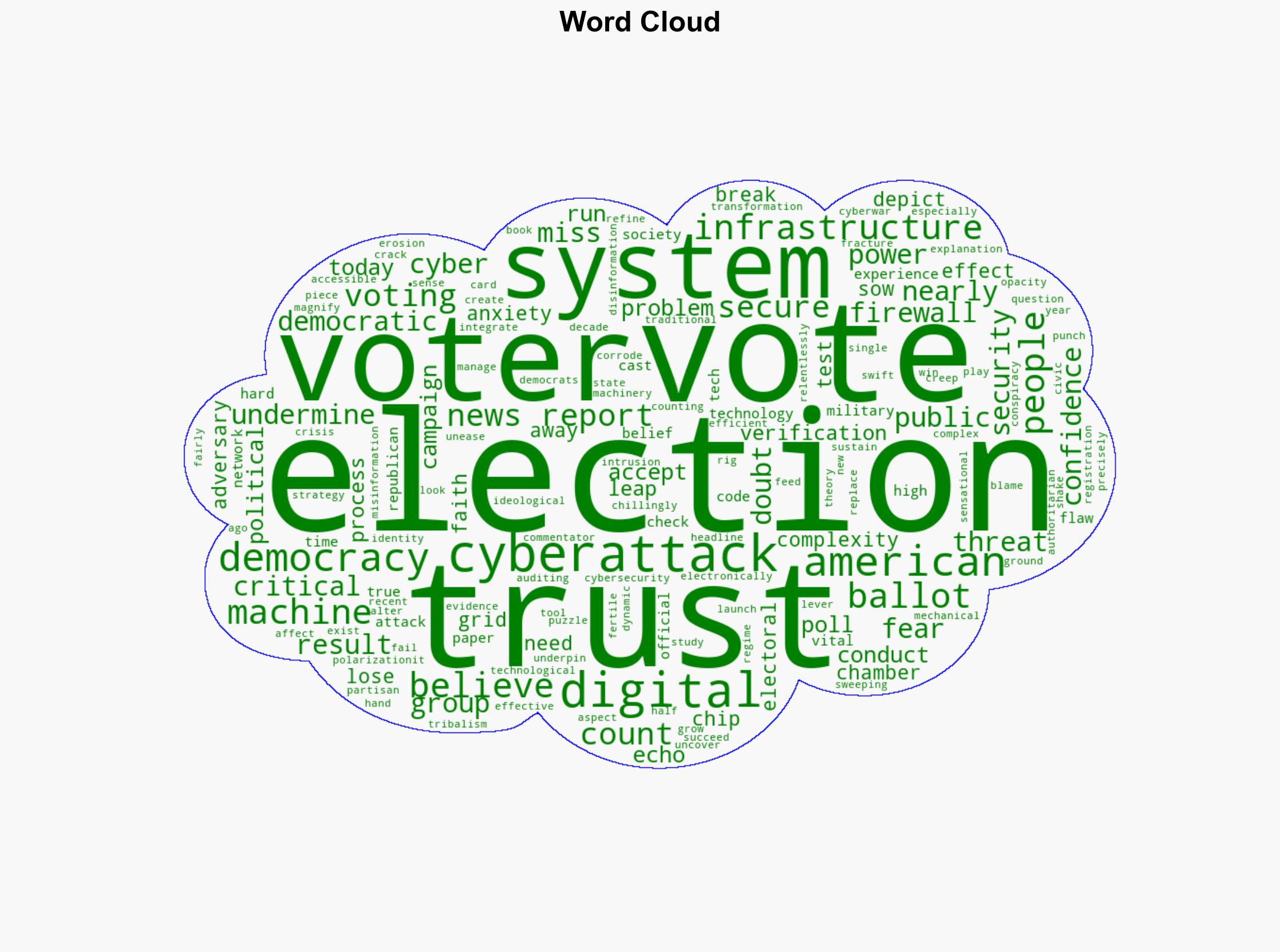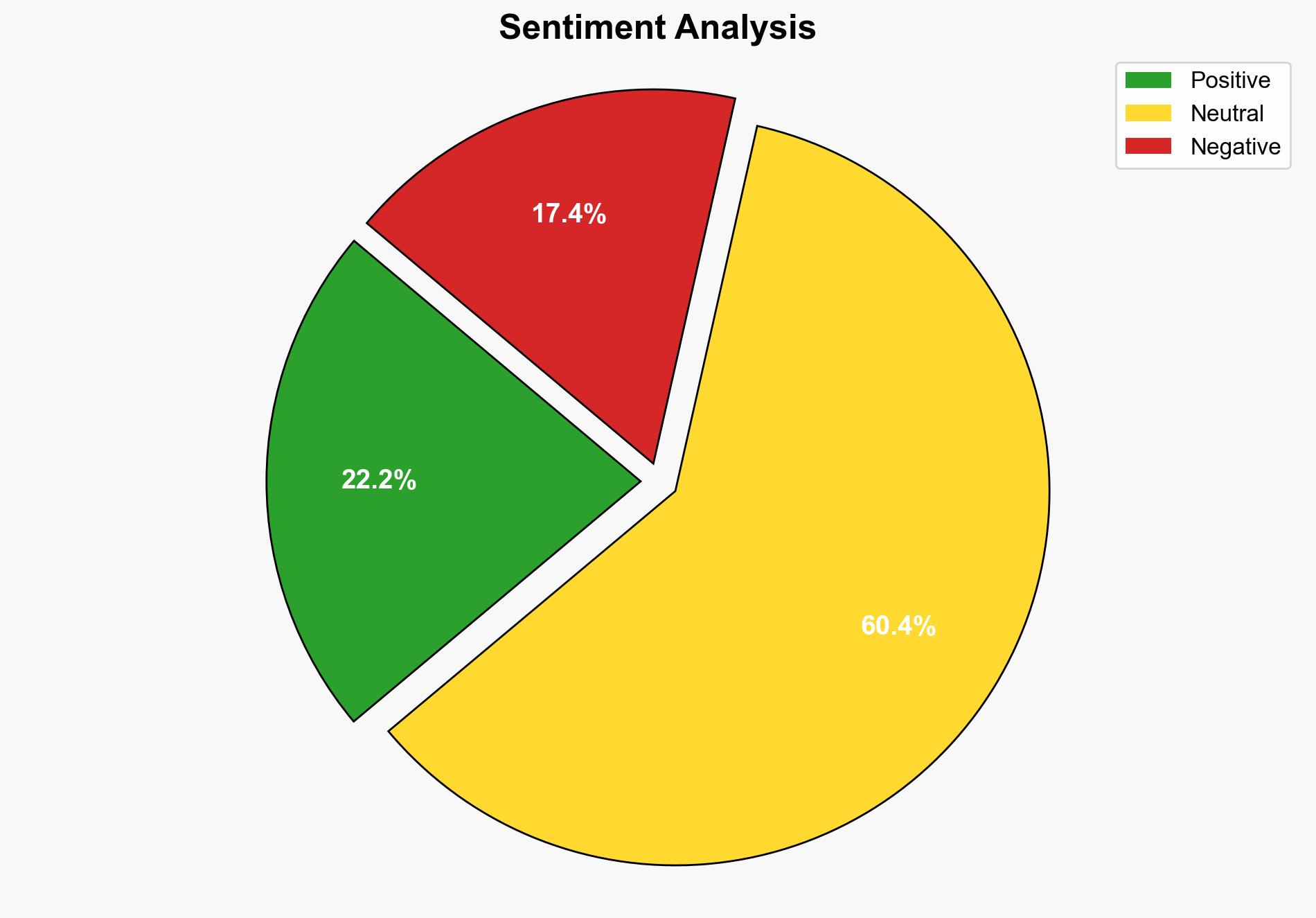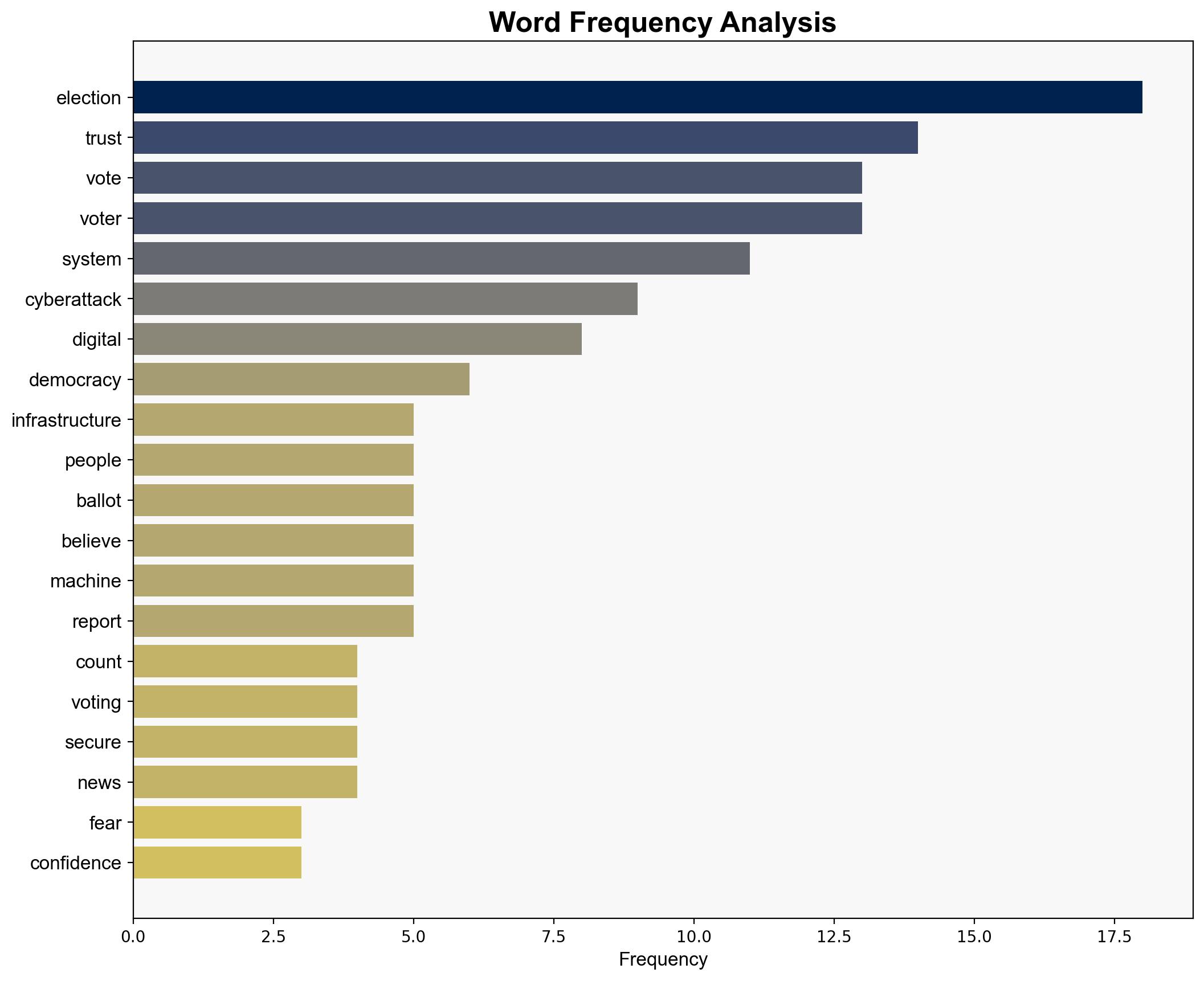How Cybersecurity Fears Affect Confidence in Voting Systems – Schneier.com
Published on: 2025-06-29
Intelligence Report: How Cybersecurity Fears Affect Confidence in Voting Systems – Schneier.com
1. BLUF (Bottom Line Up Front)
The increasing complexity and digital transformation of voting systems have heightened cybersecurity fears, undermining public confidence in electoral processes. This report identifies key vulnerabilities and recommends strategies to enhance trust and resilience in voting infrastructure. Structured analytic techniques (SATs) have been employed to ensure a comprehensive and unbiased analysis.
2. Detailed Analysis
The following structured analytic techniques have been applied to ensure methodological consistency:
Adversarial Threat Simulation
Simulations indicate that even the perception of cyber threats can significantly erode trust in voting systems. Adversaries may exploit this by amplifying fears through misinformation, potentially destabilizing democratic processes.
Indicators Development
Anomalies in voting system behavior, such as unexpected data patterns or irregular access attempts, should be closely monitored to detect early signs of cyber threats.
Bayesian Scenario Modeling
Probabilistic models suggest a high likelihood of cyberattack attempts on voting infrastructure, with varying degrees of success. These models help predict potential attack vectors and inform defensive strategies.
Network Influence Mapping
Mapping influence networks reveals how misinformation about voting system vulnerabilities spreads, highlighting key nodes and channels that adversaries may target to maximize impact.
3. Implications and Strategic Risks
The erosion of trust in voting systems poses significant risks to democratic stability. Cyber threats, whether real or perceived, can lead to decreased voter turnout, increased polarization, and challenges to election legitimacy. The potential for cascading effects across political and social domains is substantial, necessitating robust countermeasures.
4. Recommendations and Outlook
- Enhance transparency in voting processes by implementing robust auditing and verification mechanisms to reassure the public of election integrity.
- Develop comprehensive public communication strategies to counter misinformation and build resilience against cyber-induced fears.
- Scenario-based projections:
- Best Case: Strengthened cybersecurity measures and public education initiatives restore confidence in voting systems.
- Worst Case: Persistent cyber threats and misinformation campaigns lead to widespread distrust and electoral disruptions.
- Most Likely: Mixed outcomes with gradual improvements in security and public trust, contingent on proactive measures.
5. Key Individuals and Entities
Bruce Schneier
6. Thematic Tags
national security threats, cybersecurity, election integrity, misinformation, public trust





